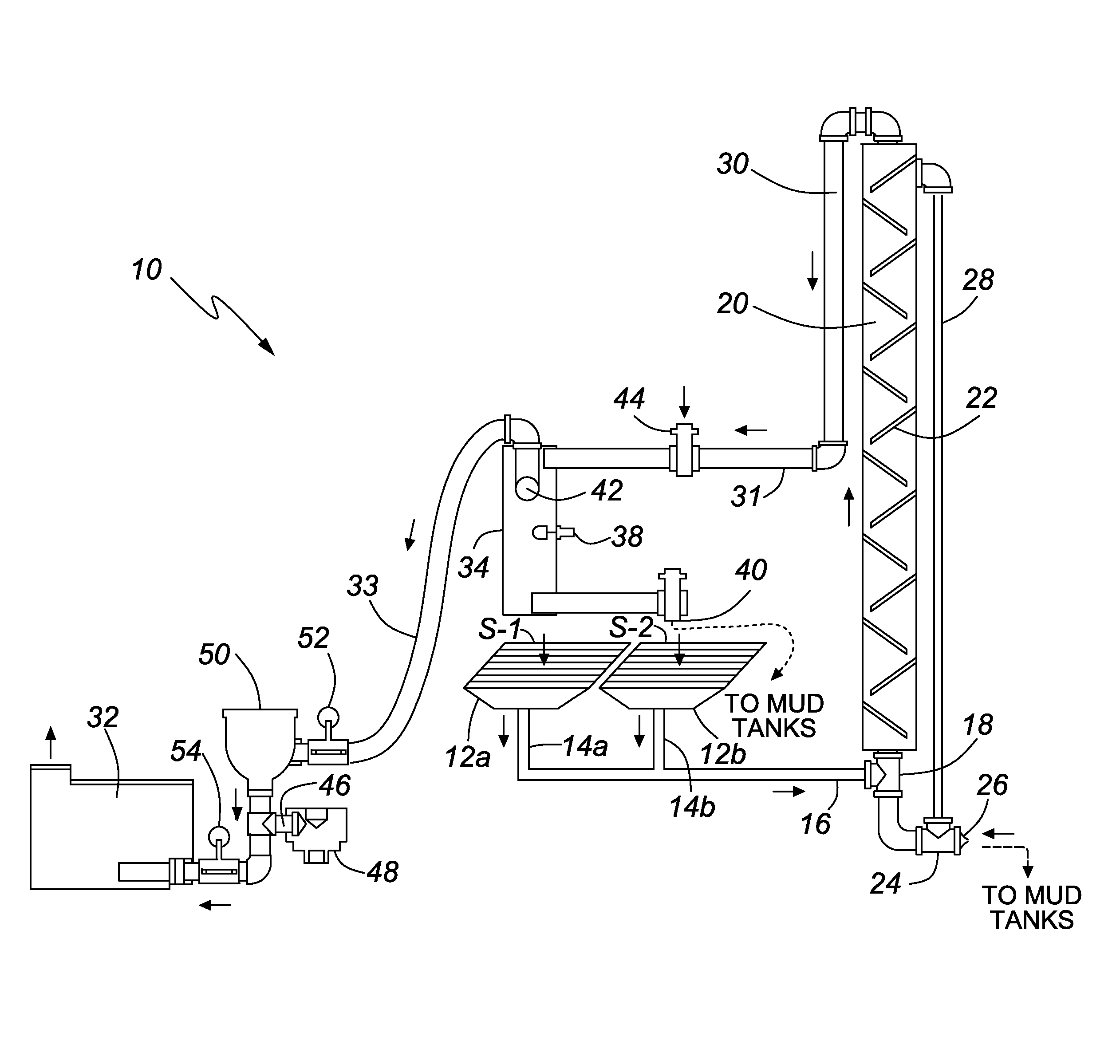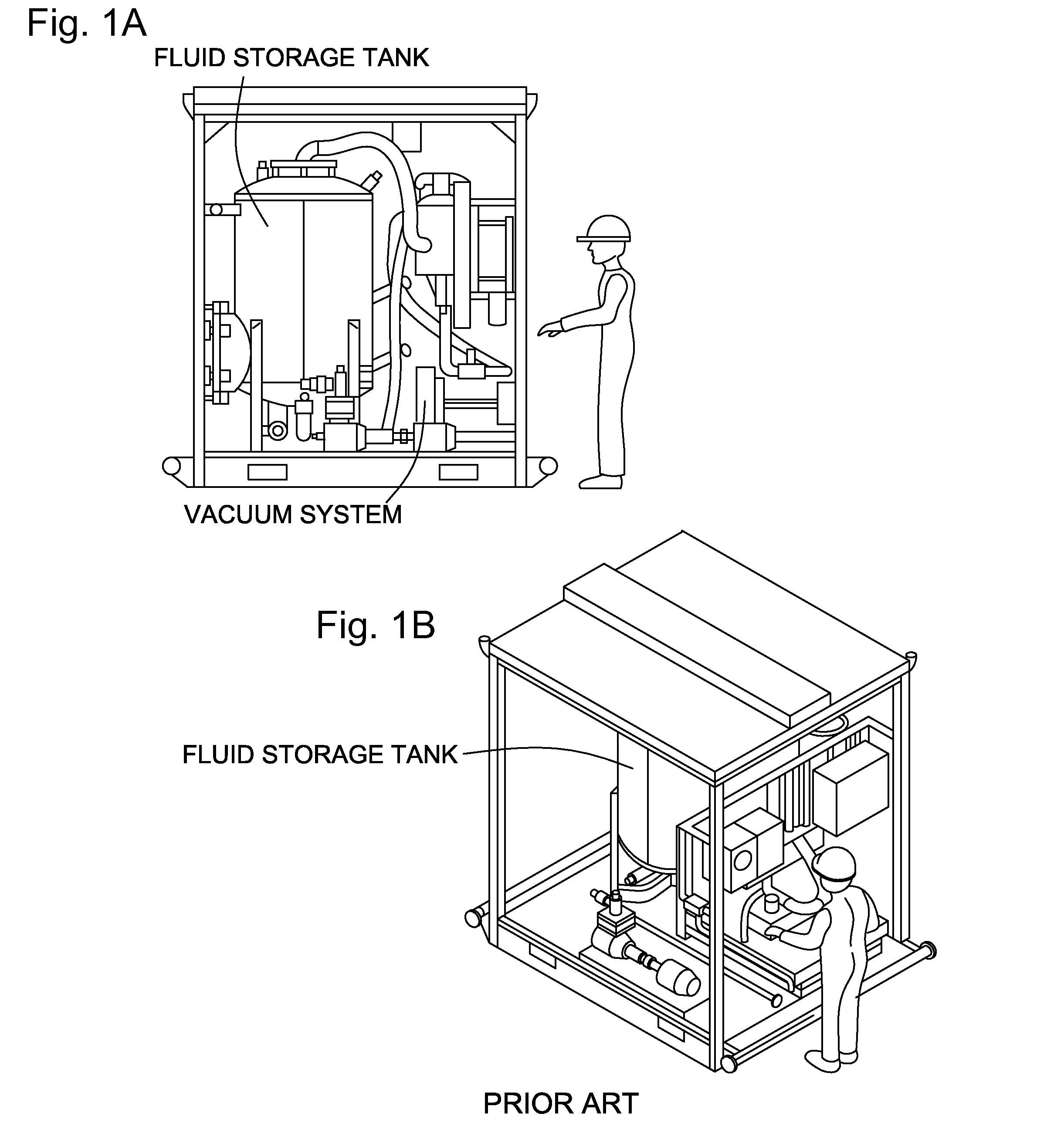Gravity Induced Separation Of Gases And Fluids In A Vacuum-Based Drilling Fluid Recovery System
- Summary
- Abstract
- Description
- Claims
- Application Information
AI Technical Summary
Benefits of technology
Problems solved by technology
Method used
Image
Examples
example embodiments
DESCRIPTION OF EXAMPLE EMBODIMENTS
[0073]Various aspects of the invention will now be described with reference to the figures. For the purposes of illustration, components depicted in the figures are not necessarily drawn to scale. Instead, emphasis is placed on highlighting the various contributions of the components to the functionality of various aspects of the invention. A number of possible alternative features are introduced during the course of this description. It is to be understood that, according to the knowledge and judgment of persons skilled in the art, such alternative features may be substituted in various combinations to arrive at different embodiments of the present invention.
example 1
Drill Fluid Recovery System with Primary Fluid Recovery Driven by a Hydrostatic Chamber
[0074]Referring now to FIG. 2, there is shown a system 10 according to one embodiment of the present invention. System 10 is shown connected to two shaker screens S-1 and S-2. Alternative embodiments include only a single connection to a single screen or more than two connections to more than two screens. These alternatives are within the scope of the invention. The connections to the screens S-1 and S-2 are made with vacuum screen attachments 12a and 12b which are often referred to in the art as “manifolds” or “vacuum manifolds.” The function of these components is to convey downward vacuum force against the fluid-contaminated drill cuttings on the screens S-1 and S-2, thereby removing the fluid from the cuttings which continue to vibrate on the shaker as they are conveyed off the screens S-1 and S-2. Vacuum screen attachments 12a and 12b are connected to respective vacuum conduits 14a and 14b wh...
example 2
Drill Fluid Recovery System with Primary Fluid Recovery Driven by an Air Distribution and Fluid Dump Assembly and Secondary Fluid Recovery Driven by a Hydrostatic Chamber
[0083]In accordance with another embodiment of the present invention and with reference to FIG. 3, there is shown another system 100 for recovering drilling fluid from drill cuttings. System 100 has many features similar to the features of the embodiment shown in FIG. 2 and therefore similar reference numerals are used in the ensuing description of operation of this system. The main difference between system 10 (FIG. 2) and system 100 (FIG. 3) is that system 100 is provided with a conduit connector unit which is herein described as the “air distribution and fluid dump assembly.” The air distribution and fluid dump assembly 15 is connected to vacuum conduits 14a and 14b and to vacuum conduit 16 which leads to the hydrostatic chamber 20. It is to be understood that the structure of the air distribution and fluid dump ...
PUM
| Property | Measurement | Unit |
|---|---|---|
| Weight | aaaaa | aaaaa |
| Time | aaaaa | aaaaa |
| Force | aaaaa | aaaaa |
Abstract
Description
Claims
Application Information
 Login to View More
Login to View More - R&D
- Intellectual Property
- Life Sciences
- Materials
- Tech Scout
- Unparalleled Data Quality
- Higher Quality Content
- 60% Fewer Hallucinations
Browse by: Latest US Patents, China's latest patents, Technical Efficacy Thesaurus, Application Domain, Technology Topic, Popular Technical Reports.
© 2025 PatSnap. All rights reserved.Legal|Privacy policy|Modern Slavery Act Transparency Statement|Sitemap|About US| Contact US: help@patsnap.com



